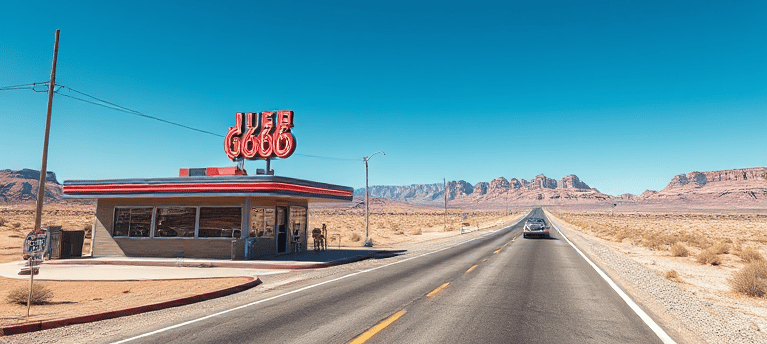Route 66: Hidden Stories from America's Historic Highway
Route 66, the historic highway connecting Chicago to Santa Monica, holds countless hidden stories of forgotten towns, civil rights struggles, and quirky roadside attractions. Its legacy remains a symbol of American adventure and resilience.
DipVai
1/30/20252 min read


Stretching over 2,400 miles from Chicago, Illinois, to Santa Monica, California, Route 66 is one of the most iconic roads in the United States. Dubbed the "Main Street of America," it has served as a vital artery for travelers, dreamers, and adventurers since its establishment in 1926. Beyond its historic landmarks and kitschy roadside attractions, Route 66 holds countless hidden stories that reflect the cultural, social, and economic evolution of the nation.
The Birth of the American Road Trip
Route 66 emerged during an era when automobile travel was becoming increasingly popular. Dubbed the "Mother Road" by John Steinbeck in his novel The Grapes of Wrath, the highway played a crucial role during the Great Depression, facilitating westward migration for families seeking a better life. The road’s development symbolized freedom and opportunity, inspiring generations to explore America by car.
Forgotten Towns and Lost Communities
While many towns thrived along the highway during its heyday, the construction of the Interstate Highway System in the 1950s and 60s bypassed numerous communities, leading to economic decline. Towns like Glenrio, Texas, and Amboy, California, became near-ghost towns, preserving remnants of a bygone era.
These forgotten places often reveal fascinating stories. For example, Erick, Oklahoma, is home to the Sandhills Curiosity Shop, run by Harley and Annabelle Russell, self-described "mediocre music makers" who entertain visitors with quirky performances.
Civil Rights and Social Change
Route 66 was more than just a road; it was a reflection of the social fabric of America. During the era of segregation, Black travelers faced significant challenges in finding safe lodging and dining options. The Negro Motorist Green Book became an essential guide for African Americans navigating the highway.
Sites such as the Dunbar Hotel in Phoenix, Arizona, and the Lorraine Motel (located near a Route 66 detour in Memphis) served as vital safe havens for Black travelers.
Unusual Attractions and Hidden Gems
Beyond the well-known landmarks like the Cadillac Ranch in Texas and the Wigwam Motel in California, Route 66 hides many unique attractions:
The Blue Whale of Catoosa: A whimsical roadside sculpture in Oklahoma, originally built as an anniversary gift.
The Devil’s Elbow: A scenic stretch of the highway in Missouri named for its treacherous river bend.
Bagdad Cafe: A quirky stop in Newberry Springs, California, made famous by the 1987 movie of the same name.
Preservation Efforts and Modern Revival
Despite its decline, Route 66 has experienced a resurgence in recent years, thanks to preservation efforts by enthusiasts and organizations. Historic Route 66 associations work tirelessly to maintain and promote the road’s cultural significance.
Road trip enthusiasts continue to flock to the highway, seeking an authentic taste of Americana. Vintage diners, neon signs, and restored motels offer a nostalgic journey through history.
Final Mile
Route 66 remains more than just a road—it’s a living testament to the spirit of adventure and resilience. Its hidden stories remind us of the diverse experiences that shaped America, making it a destination that continues to inspire travelers from around the world.
Get in touch
itsusdipvai@gmail.com
